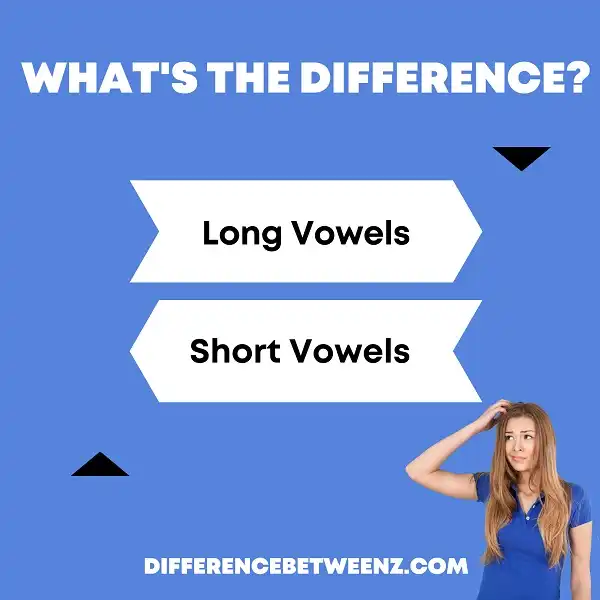There are two types of vowel sounds in the English language: long and short. However, what many people don’t know is that these two types of vowels are pronounced differently. In this blog post, we will discuss the difference between long and short vowels. We will also provide examples to help you better understand how to pronounce these vowel sounds. So, let’s get started!
What are Long Vowels?
- Long vowels are essentially just what they sound like – vowels that are pronounced with a long sound. This can be contrasted with short vowels, which have a much shorter sound. Long vowels typically arise when a vowel is followed by a Silent e, as in the word ‘cake.’ In this case, the Silent e acts to lengthen the preceding vowel sound.
- Long vowels can also occur when two vowel sounds are found next to each other in a word, as in the word ‘boat.’ In this instance, both vowel sounds are usually pronounced separately.
- While long and short vowel sounds may seem like minor detail, they can actually make a big difference in the meaning of a word. For instance, the word ‘bit’ (short vowel sound) means something entirely different than the word ‘bite’ (long vowel sound). As such, it’s important to be able to identify long vowel sounds when reading and pronouncing words.
What are Short Vowels?
- Short vowels are the five basic vowel sounds in English: they include the sounds of the letters a, e, i, o, and u. Each of these letters can represent more than one sound, but when they are used to represent a short vowel sound, they are known as “short vowels.” Short vowels typically have a shorter duration than long vowels, and they are usually followed by a consonant sound.
- The shortest vowel sound is that of the letter i, which is known as a “close front unrounded vowel.” The other short vowel sounds are produced further back in the mouth and are not as close to the articulatory position of i.
- Short vowels are typically found in unstressed syllables or before consonant clusters, while long vowels tend to occur in stressed syllables. Short vowels are an important part of English pronunciation and can be difficult for language learners to master. However, with practice, everyone can learn to produce these sounds correctly.
Difference between Long and Short Vowels
Long and short vowels are different in the length of time that they are pronounced. Long vowels are pronounced for a longer duration than short vowels. Long vowels are also typically pronounced at a higher pitch than short vowels.
- The difference in duration and pitch between long and short vowels helps to distinguish between different words. For example, the word “bee” is distinguished from the word “boot” by the length of the vowel sound.
- Longer vowel sounds are also often used to indicate emphasis or to provide information about the grammatical function of a word. For instance, the word “I” is a long vowel, which signals that it is the subject of a sentence.
- In contrast, the word “a” is a short vowel, which typically signals that it is an article or indefinite pronoun. While long and short vowels may seem like a small distinction, they play an important role in helping us to communicate effectively.
Conclusion
We hope this article has helped you understand the difference between long and short vowels. In order to improve your pronunciation, it’s important to be aware of which vowel is which sound.


